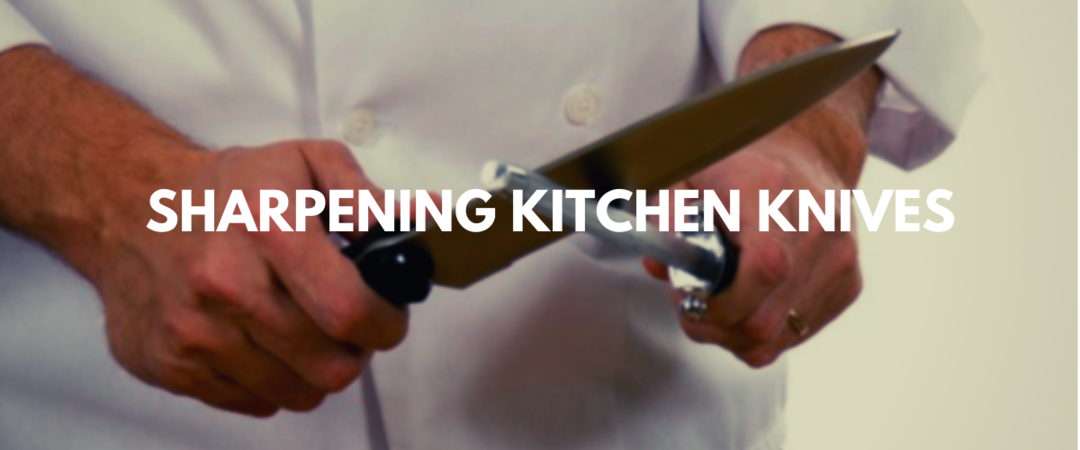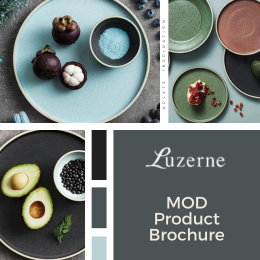Sharpening Your Kitchen Knives
Author: Siobhan Thomson Date Posted:13 July 2021

Keeping your knives blades sharp is key when you are in a busy kitchen or even in your kitchen at home. A properly sharpened knife can completely change the outcome of foods, however, even the best knives will dull over time. Keeping them sharp is simple and below are some tips and techniques that can help you keep your knives sharp and ready for use.
Using a Sharpening Steel
A sharpening steel keeps the edge of your knife razor sharp by shaving tiny bits of the blade off. Most knives are made of extremely durable steel alloy, so they are made to withstand sharpening many times. As a knife is used, the edge will become curled. While you can't see the curl with the naked eye, a microscope reveals that the edge is askew. The tiny microscopic fibers bend over and dull the edge of the knife. The sharpening steel will straighten or re-align these fibers. Regular steeling is recommended. The more often you steel, the longer the sharp edge will last. Steeling is an effective way to help maintain your knife's edge between sharpenings.
However, a sharpening steel is not to be confused with a honing steel. A honing steel will not sharpen the blade, they will smooth out minor imperfections that occur to the knife between major cuts and hone it back to sharp. In short, you hone the knives with a honing steel and sharpen them with a knife sharpener. Honing is straightening the edge, getting the sharpness back after a lot of work. Sharpening happens when the knife no longer responds to honing and needs some thinning out of metal to get the fine profile back that is once again easy to hone.
Using a sharpening steel on a regular basis will keep your knives in top condition:
Step 1: Position the Steel
Position the steel vertically over a cutting board, kitchen towel or other suitable surface.
Step 2: Select the Proper Angle.
Selecting the right angle is an important part of using the steel. In general most knives are sharpened to an approximately 20 degree angle. This is the same angle you'll want to use with your steel. To find 20 degrees, first hold your knife at a 90 angle to the steel, then visually cut the angle in half, moving your knife to a 45 degree angle. Finally, you'll cut the angle in half one more time to find the roughly 20 degree angle where you'll position your knife.
Step 3: Steel the Edge.
Holding your knife at a 20 degree angle to the steel, take alternating passes with your knife across the steel applying light to medium pressure. Don't try to dig into the steel, a gentle slicing motion that moves your blade across the knife from heel to tip is all you need. Take about a half dozen alternating passes across the full length of your blade. Always give each side the same number of strokes to maintain an even cutting edge.
If you are not feeling confident, check out the video below:
There are other knife sharpening tools that can help extend the lifespan of any knife and keep them strong and durable:
Diamond Steel knife sharpeners are made with modern materials that make the sharpening process much more efficient. Diamond rods are normally used casually between heavy uses to lengthen the duration of the sharpness before the knife needs to be put to the stone or grinder. Crafted in the same manner as stainless steel sharpeners, these newer models give a grittier surface that sharpens knives in less pass throughs.
You can also use a whetstone. Using a whetstone may take a bit of practice, but once you get the hang of it, you'll be able to keep knives razor-sharp. One important note: "Whet" doesn't mean "wet"—it means sharpen, although some whetstones require soaking. The ideal whetstone has two sides to it, one with a coarse grit, whilst the other side has a finer grit. Different knives require the edge of the knife to be applied to the stone at a different angle. Watch this video for technical advice about sharpening your knives using a whetstone:
A knife sharpener is easy for everyone to use. BCE stocks SCANPAN's 3-step knife sharpener with three different sharpening wheels of tungsten, diamond and ceramic. To sharpen completely blunt knives (12 months or more since the last sharpening), use all three sharpening wheels. If you sharpen them more frequently (every 2-3 months) use the diamond and ceramic sharpeners. For everyday use or minimum once a week, use the ceramic sharpener.
Watch this vidoe to see how to use the Scanpan sharpener:
Sharp knives are always a joy to work with. Having either a steel or a knife sharpener in your kitchen will give your knives a new lease of life and the joy of working in the kitchen will become even greater.
If you wish to know more about which knife sharpener is the right one for you, talk to our experts today. They are always happy to help!









.png)


